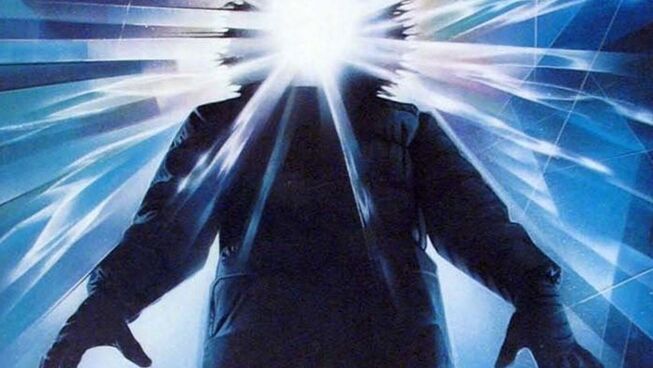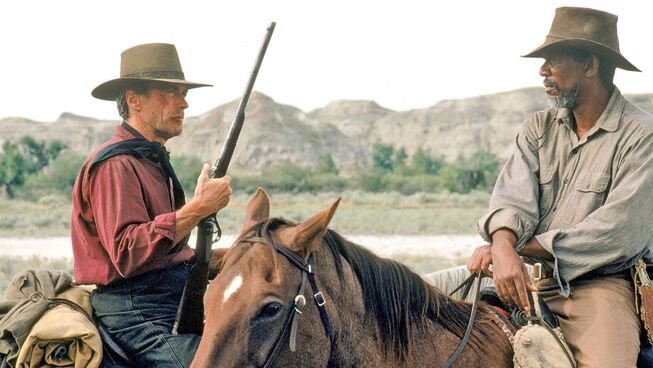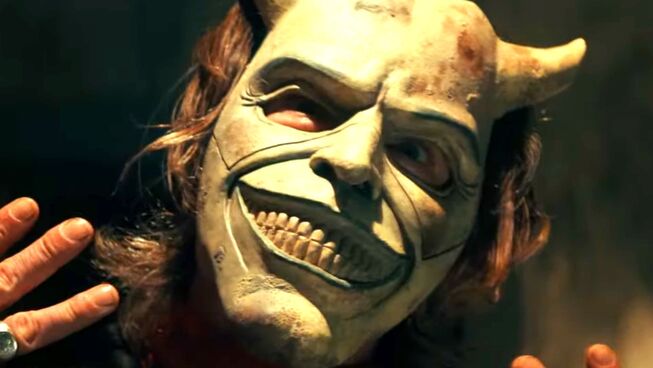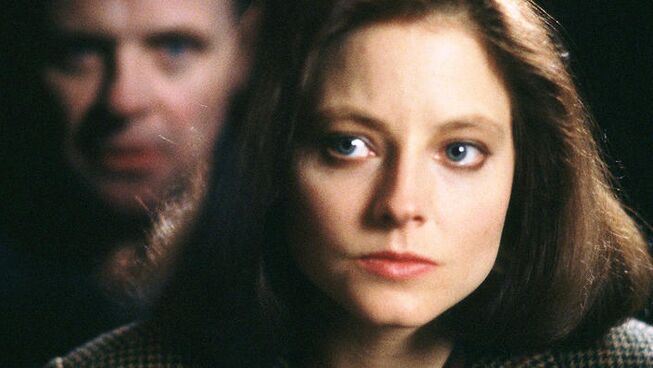
Man is the warmest place to hide.
John Carpenter’s horror cult classic The Thing was released in June 1982 to spectacularly negative reviews. New York Times film critic, Vincent Canby, summarised the film (and a host of like-minded critics) as “foolish” and “depressing.” Canby piled on by characterizing the actors as “props to be hacked, disembowelled, and decapitated, finally to be eaten and then regurgitated.” In case his opinion wasn’t clear enough Canby punctuated his contempt for the film by calling it “too phony to be disgusting” and “instant junk.” Roger Ebert was more polite in his review of what he called “a great barf-bag movie”, while dismissing the ensemble cast as “setups for an attack by the Thing.” In the forty years since its release, The Thing has transformed into a beloved masterpiece of horror and suspense. What was once considered a poor imitation of science-fiction cinema is now regarded by many as one of the finest films of the sci-fi horror genre and possibly the best B-movie of all time.
The Thing’s plot is wonderfully simple. A small group of American research scientists is stationed at a remote location in Antarctica. One day the U.S. camp is disrupted by a neighbouring Norwegian helicopter chasing and shooting at an escaped sled dog. Alarmed by this sudden and crazed behaviour, the American researchers kill the two men and destroy the aircraft. They take the dog in and decide to check on the Norwegian camp. What the team finds is disturbing. Everyone is dead, and the base is in ruins. It also appears the Norwegians only recently discovered something ancient and terrible buried in the ice. The team brings one of the charred corpses back to the base for an autopsy that reveals a troubling combination of human and alien-like characteristics. Later that night, the men are alerted to the dog kennel. The dog they let in that morning has mutated into a horrifying thing that is now attacking them. Although the creature is killed, the team faces an awful conclusion. An alien parasite with the ability to perfectly imitate other lifeforms has been let into the camp. Who among them has been infected, and how can they stop this thing before it escapes to civilization?
In 1951 a film called The Thing from Another World was adapted from a short story by John Campbell called Who Goes There? In a sure sign of the times, the film was perceived more as an allegory for McCarthy-ism than an entertaining piece of science fiction. It was viewed through the prism of communism and a permeating paranoia that closeted communists were lurking next door. In the mid-1970s, pre-production began on a more faithful adaptation of the 1938 novella. Universal Pictures cycled through several writers and directors before settling on an up-and-coming director named John Carpenter. In 1978 this relatively unknown 30-year-old filmmaker released an independent, low-budget horror movie called Halloween. It went on to define an entire genre of slasher films and catapulted this young director into the Hollywood mainstream. The studio was passing on other directors for The Thing, Carpenter followed the massive success of Halloween with two more popular low-budget independent films: The Fog in 1980 and Escape From New York in 1981. Hollywood took notice and Universal Pictures decided it was time for a big studio to back the wunderkind director.
With studio resources now at his disposal, the newly minted horror expert hired an inexperienced 21-year-old special makeup effects artist, Rob Bottin (Game of Thrones, Se7en), to lead the special effects team for The Thing. Carpenter’s shoestring budget for Halloween limited what could be feasibly shown to the audience. Consequently, the gore was primarily implied. For The Thing, he unleashed Bottin and his small team of makeup artists and told them, “This time we are going to show everything.” Judging by the critical response and overall reception, people weren’t prepared for this next gross-out level. The age of CGI has rendered practical effects nearly irrelevant. It is why audiences should take note when they appear on the screen. From a severed head sprouting spider-like legs to a stomach opening into a grotesque mouth that severs a person’s arms (a simple prosthetic Jell-O mould was used for the arms), the special effects have aged remarkably well in the forty years since The Thing’s release.
In addition to the cringe-worthy special effects, there is an ambiguity in the storytelling that makes The Thing extremely re-watchable. Instead of extensive backstory and heavy exposition to ensure the audience can connect every dot, Carpenter prefers an atmosphere of uncertainty. He likes to leave subtle clues that become more apparent during subsequent viewings. Other questions are left to pure speculation and open discussion. When and how did the Thing get buried in the ice? Who did the dog infect first? How does the Thing take over its victims? Who framed MacReady? Carpenter was criticised for leaving loose ends and using one-dimensional characters as props. The fact that none of the characters is given a backstory creates more mystery. While each character in the ensemble fulfils his specific role in the narrative (MacReady as the pilot, Childs as the mechanic, Copper as the doc, etc.), the Thing is trying to blend in and fool the others by mimicking the roles that each of them to were assigned to play. Consequently, suspicion amongst the men drives a paranoia that threatens to do more damage to the team than the Thing could do on its own.
The ensemble cast includes terrific performances by Kurt Russell as Mac, Keith David as Childs, Wilford Brimley as Blair, and a wickedly intelligent canine named Jed as the Dog Thing. During the 80’s, Kurt Russell was to John Carpenter as John Wayne was to John Ford. The iconic actor has starred in three Carpenter classics. In addition to the introverted helicopter pilot MacReady, Russell played the war hero “Snake” Plissken in Escape from New York and the swashbuckling Jack Burton in Big Trouble in Little China. Carpenter also convinced the legendary Ennio Morricone (The Good, The Bad, and The Ugly) to score the film. The result is a simple riff using synthesizers that sounds similar to the legendary director's own scores from his previous films.
It is rare when a film is hated initially and then transforms over time into a widely respected work of art. Upon its release, during the summer of 1982 the United States was in the middle of a recession. Audiences were craving positivity and found it in Steven Spielberg’s sentimental, family friendly E.T. the Extra-Terrestrial, which was released earlier in the year. The Thing is bleak and depressing and an indictment of human nature.
Reel Dialogue: What can we consider from The Thing?
Aside from its pure entertainment value, The Thing explores themes around paranoia and artificiality that are relevant on a deeper level. Unfortunately, authenticity is often a missing ingredient in meaningful relationships. We long for human connection, yet something inside prevents us from being completely real and trusting others.
The truth is we are all plagued with a deceitful heart that is impossible to fully know. Fortunately, there is a God who is not fooled by the outward performance and is intent on revealing our inward predations.
For the word of God is living and active, sharper than any two-edged sword, piercing to the division of soul and of spirit, of joints and of marrow, and discerning the thoughts and intentions of the heart. - Hebrews 4:12






